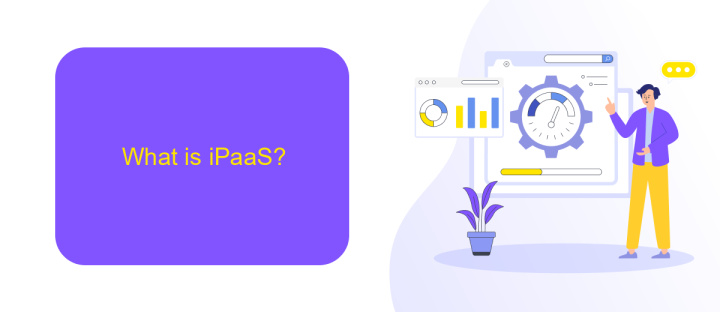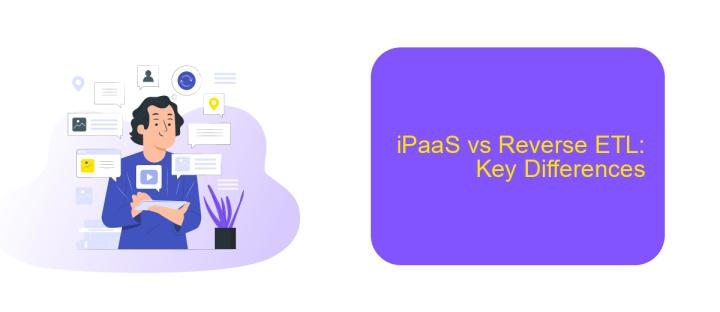iPaaS vs Reverse ETL
In the ever-evolving landscape of data integration, two powerful methodologies have emerged: Integration Platform as a Service (iPaaS) and Reverse ETL. While iPaaS focuses on consolidating and streamlining data flows across diverse systems, Reverse ETL aims to operationalize data by moving it from data warehouses back into business applications. This article explores their distinct functions, benefits, and use cases.
Introduction
The landscape of data integration and management has evolved significantly, with businesses leveraging various tools to streamline their workflows. Two prominent solutions in this space are Integration Platform as a Service (iPaaS) and Reverse ETL. While both aim to enhance data connectivity and usability, they serve distinct purposes and offer unique benefits.
- iPaaS facilitates the integration of applications and services, enabling seamless data flow across different systems.
- Reverse ETL focuses on extracting data from data warehouses and operationalizing it within business applications.
- Tools like ApiX-Drive offer robust capabilities for setting up and managing integrations efficiently.
Understanding the differences between iPaaS and Reverse ETL is crucial for businesses looking to optimize their data strategies. This article delves into the functionalities, advantages, and use cases of both solutions to help you make informed decisions about your data integration needs.
What is iPaaS?

Integration Platform as a Service (iPaaS) is a cloud-based solution designed to connect disparate systems, applications, and data sources within an organization. It offers a centralized platform that facilitates seamless data integration, enabling businesses to automate workflows, synchronize data, and improve overall operational efficiency. By leveraging iPaaS, companies can streamline their integration processes without the need for extensive coding or complex IT infrastructure, making it accessible to both technical and non-technical users.
One of the key benefits of iPaaS is its ability to support a wide range of integration scenarios, from simple data transfers to complex multi-step workflows. For instance, services like ApiX-Drive provide user-friendly tools that allow businesses to easily set up and manage integrations between various applications and services. This not only reduces the time and effort required to maintain integrations but also ensures that data is consistently up-to-date across all systems. As a result, iPaaS empowers organizations to focus on their core activities while maintaining a high level of data accuracy and connectivity.
What is Reverse ETL?

Reverse ETL (Extract, Transform, Load) is a process that takes data from a data warehouse and sends it back to operational systems, such as CRM or marketing platforms. Unlike traditional ETL, which moves data into a centralized warehouse, Reverse ETL ensures that the insights gained from the data are actionable and accessible within the tools used by different teams.
- Data Extraction: Data is extracted from the data warehouse.
- Data Transformation: The extracted data is transformed to fit the schema of the target operational system.
- Data Loading: The transformed data is loaded into the target operational system.
By using services like ApiX-Drive, businesses can automate the Reverse ETL process, making it easier to synchronize data between various platforms. ApiX-Drive allows for seamless integration between data warehouses and operational tools, ensuring that up-to-date data is always available for decision-making. This enhances the efficiency of business operations and improves the overall data strategy.
iPaaS vs Reverse ETL: Key Differences

iPaaS (Integration Platform as a Service) and Reverse ETL (Extract, Transform, Load) are both essential tools for data integration, but they serve different purposes. iPaaS platforms like ApiX-Drive focus on connecting various applications and automating workflows, ensuring seamless data flow between systems. In contrast, Reverse ETL is designed to take data from a data warehouse and push it back into operational systems for actionable insights.
One of the key differences lies in their primary functions. iPaaS solutions are used to integrate and synchronize data across multiple cloud-based applications, while Reverse ETL tools are mainly used to operationalize data by moving it from data warehouses to business applications.
- Purpose: iPaaS integrates applications; Reverse ETL operationalizes data.
- Data Flow: iPaaS supports bidirectional data flow; Reverse ETL focuses on one-way data movement from warehouses to applications.
- Use Case: iPaaS is ideal for automating workflows; Reverse ETL is used for enhancing business processes with data insights.
In summary, while both iPaaS and Reverse ETL aim to streamline data processes, they cater to different needs. iPaaS platforms like ApiX-Drive excel in connecting and automating various applications, whereas Reverse ETL tools are crucial for leveraging data stored in warehouses to improve operational efficiency.
Conclusion
In conclusion, both iPaaS and Reverse ETL offer distinct advantages depending on the specific needs of your organization. iPaaS excels in integrating various applications and data sources, providing a seamless flow of information across your tech stack. This is particularly beneficial for organizations looking to streamline operations and improve efficiency. On the other hand, Reverse ETL focuses on operationalizing data by moving it from data warehouses to business applications, enabling more actionable insights and data-driven decision-making.
Choosing between iPaaS and Reverse ETL ultimately depends on your business objectives and technical requirements. For those seeking a comprehensive solution to manage integrations effortlessly, services like ApiX-Drive can be invaluable. ApiX-Drive simplifies the process of connecting different systems, allowing businesses to focus on leveraging their data effectively. Whether you prioritize seamless integration or actionable data insights, understanding the strengths of each approach will guide you in making an informed decision.
FAQ
What is iPaaS?
What is Reverse ETL?
How do iPaaS and Reverse ETL differ?
When should I use iPaaS?
When should I use Reverse ETL?
Strive to take your business to the next level, achieve your goals faster and more efficiently? Apix-Drive is your reliable assistant for these tasks. An online service and application connector will help you automate key business processes and get rid of the routine. You and your employees will free up time for important core tasks. Try Apix-Drive features for free to see the effectiveness of the online connector for yourself.

